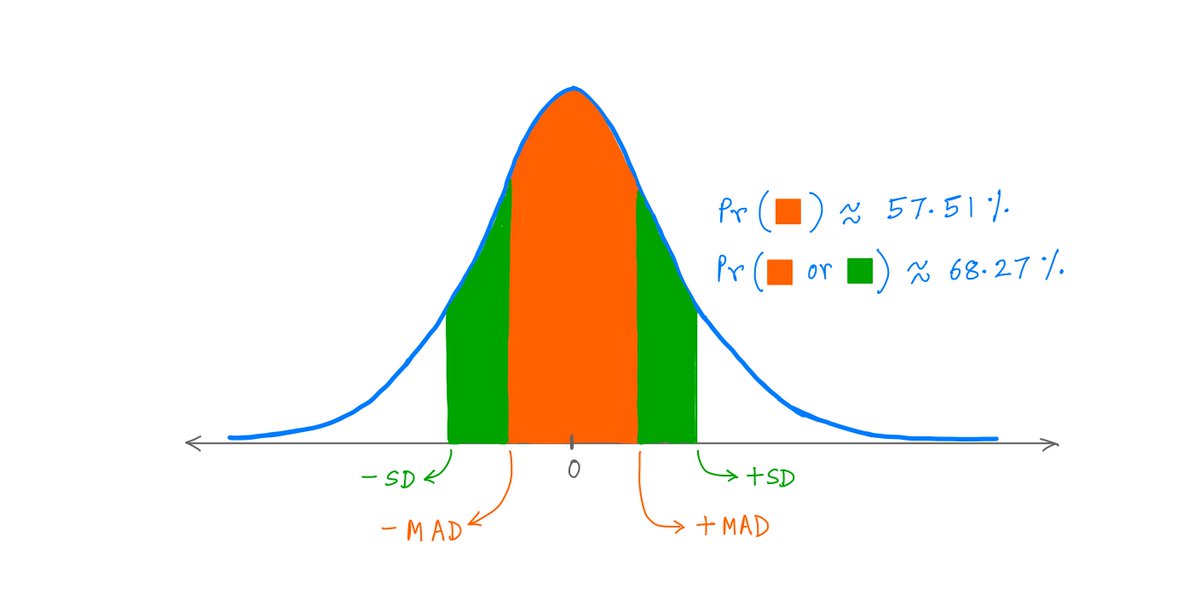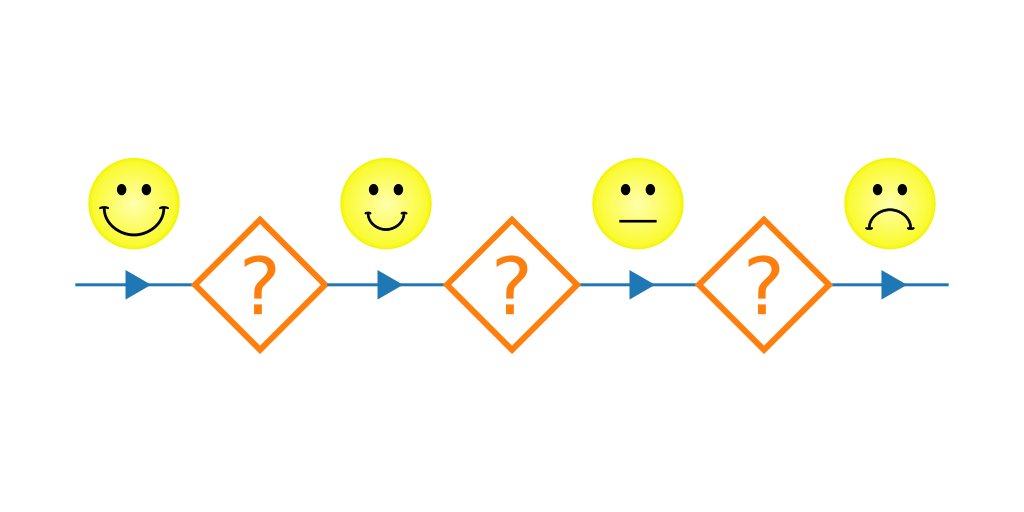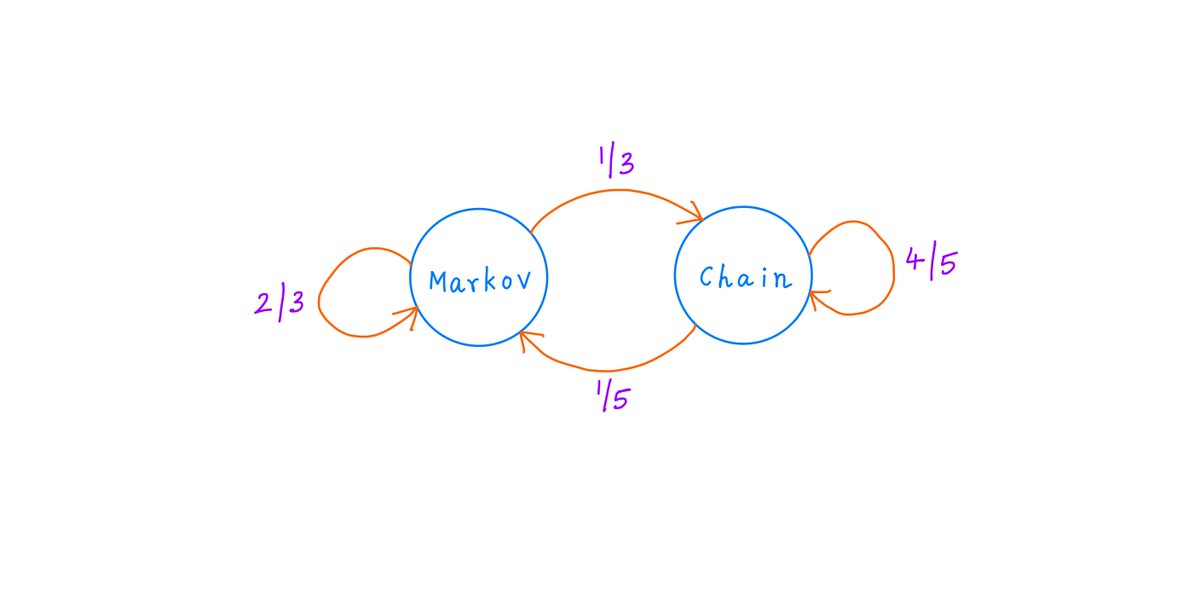
1/
Get a cup of coffee.
In this thread, I'll walk you through one of Charlie Munger's greatest insights:
In the long term, the return an investor gets from a business will roughly equal the return the business itself earns on its capital.
Get a cup of coffee.
In this thread, I'll walk you through one of Charlie Munger's greatest insights:
In the long term, the return an investor gets from a business will roughly equal the return the business itself earns on its capital.
2/
In the book Poor Charlie's Almanack, there's a wonderful chapter called Elementary Worldly Wisdom.
That chapter contains this beautiful nugget:
In the book Poor Charlie's Almanack, there's a wonderful chapter called Elementary Worldly Wisdom.
That chapter contains this beautiful nugget:

3/
Of all the things I've learned from Charlie Munger, this nugget has had the greatest impact on me.
Once I worked out the logic behind it, I never looked at businesses or investing the same way again.
And in this thread, I want to share this logic with you.
Of all the things I've learned from Charlie Munger, this nugget has had the greatest impact on me.
Once I worked out the logic behind it, I never looked at businesses or investing the same way again.
And in this thread, I want to share this logic with you.
4/
Here, Charlie is comparing the long-term returns an investor will get by simply buying and holding 2 different businesses.
The first one is a Fair business. It earns 6% on capital each year. Let's call it F (for Fair).
Here, Charlie is comparing the long-term returns an investor will get by simply buying and holding 2 different businesses.
The first one is a Fair business. It earns 6% on capital each year. Let's call it F (for Fair).
5/
The second is a Wonderful business. It earns 18% per year on its capital.
Let's call this business W (for Wonderful).
The second is a Wonderful business. It earns 18% per year on its capital.
Let's call this business W (for Wonderful).
6/
Here's how Charlie thinks about F and W.
Each of these businesses has some "capital" in it. This is money invested into the business by its owners.
Each business proceeds to earn a "return" on this capital every year. These are the "earnings" produced by each business.
Here's how Charlie thinks about F and W.
Each of these businesses has some "capital" in it. This is money invested into the business by its owners.
Each business proceeds to earn a "return" on this capital every year. These are the "earnings" produced by each business.
7/
The key difference between F and W is that F earns only 6% on its capital every year, whereas W earns 18%.
Thus, for the same amount of *capital*, W is able to produce 3 times as much *earnings* as F.
The key difference between F and W is that F earns only 6% on its capital every year, whereas W earns 18%.
Thus, for the same amount of *capital*, W is able to produce 3 times as much *earnings* as F.
8/
For example, if we start off both F and W with $1M of capital, F will earn 6% of $1M = $60K in its first year.
But in the same year, W will earn $180K -- 3 times as much as F.
For example, if we start off both F and W with $1M of capital, F will earn 6% of $1M = $60K in its first year.
But in the same year, W will earn $180K -- 3 times as much as F.
9/
But that's not all.
The crucial thing is: Both F and W *re-invest* their earnings back into their own operations -- so they can grow these very earnings over time.
But that's not all.
The crucial thing is: Both F and W *re-invest* their earnings back into their own operations -- so they can grow these very earnings over time.
10/
That is, after 1 year, F will have its original $1M *plus* its $60K earnings = a total of $1.06M of capital to work with.
And W will have $1.18M.
So, in its 2'nd year, F will earn 6% of $1.06M = $63.6K -- up from $60K.
And W will earn 18% of $1.18M = $212.4K.
And so on.
That is, after 1 year, F will have its original $1M *plus* its $60K earnings = a total of $1.06M of capital to work with.
And W will have $1.18M.
So, in its 2'nd year, F will earn 6% of $1.06M = $63.6K -- up from $60K.
And W will earn 18% of $1.18M = $212.4K.
And so on.
12/
The upshot is that F is able to grow its earnings only at 6% per year, whereas W grows at 18% per year.
For example, here's a 30-year simulation of both F and W -- starting with the same $1M of capital.
By Year 30, F is earning ~$325K. But W is earning ~$22M!
The upshot is that F is able to grow its earnings only at 6% per year, whereas W grows at 18% per year.
For example, here's a 30-year simulation of both F and W -- starting with the same $1M of capital.
By Year 30, F is earning ~$325K. But W is earning ~$22M!

13/
But of course, just because a *business* earns X% per year on capital, it doesn't mean an *investor* holding the business will enjoy the same X% per year return on his investment.
The investor's return will also depend on the *price* at which he buys and sells the business.
But of course, just because a *business* earns X% per year on capital, it doesn't mean an *investor* holding the business will enjoy the same X% per year return on his investment.
The investor's return will also depend on the *price* at which he buys and sells the business.
14/
But here's Charlie's key insight:
Over *long* periods of time, the investor's purchase and sale prices just don't matter very much.
The investor will end up getting more or less X% per year -- same as the underlying business -- *regardless* of his entry/exit price.
But here's Charlie's key insight:
Over *long* periods of time, the investor's purchase and sale prices just don't matter very much.
The investor will end up getting more or less X% per year -- same as the underlying business -- *regardless* of his entry/exit price.
15/
What this means is: even if an investor is able to buy F at a very attractive price (say, a low P/E ratio), the advantage of striking this bargain erodes over time.
So, over time, the investor's return will tend to gravitate towards the business's mediocre 6% per year.
What this means is: even if an investor is able to buy F at a very attractive price (say, a low P/E ratio), the advantage of striking this bargain erodes over time.
So, over time, the investor's return will tend to gravitate towards the business's mediocre 6% per year.
16/
And by the same token, even if an investor pays an optically high P/E multiple for W, the *disadvantage* of this steep price also erodes over time -- and the investor's return will again gravitate towards the business's wonderful 18% per year.
And by the same token, even if an investor pays an optically high P/E multiple for W, the *disadvantage* of this steep price also erodes over time -- and the investor's return will again gravitate towards the business's wonderful 18% per year.
17/
For example, suppose we buy F at a "cheap" forward P/E of 8.
And after 30 years, we sell it at a robust forward P/E of 20.
In spite of our low purchase price and 2.5x multiple expansion, our 30-year return is only ~9.28% annualized.
Over 30 years, that's $1 becoming $14.
For example, suppose we buy F at a "cheap" forward P/E of 8.
And after 30 years, we sell it at a robust forward P/E of 20.
In spite of our low purchase price and 2.5x multiple expansion, our 30-year return is only ~9.28% annualized.
Over 30 years, that's $1 becoming $14.

18/
On the other hand, let's say we buy W at an "expensive" 50 P/E.
And after 30 years, we sell it at a much lower 20 P/E.
In spite of our high purchase price and 2.5x multiple *contraction*, we still get a ~14.45% annualized return over 30 years -- turning $1 into $57!
On the other hand, let's say we buy W at an "expensive" 50 P/E.
And after 30 years, we sell it at a much lower 20 P/E.
In spite of our high purchase price and 2.5x multiple *contraction*, we still get a ~14.45% annualized return over 30 years -- turning $1 into $57!

19/
That's what Charlie is saying.
Over long periods of time, business quality (as measured by return on capital and reinvestment opportunities) always trumps purchase/sale timing, entry/exit multiples, etc.
And here's the math behind it:
That's what Charlie is saying.
Over long periods of time, business quality (as measured by return on capital and reinvestment opportunities) always trumps purchase/sale timing, entry/exit multiples, etc.
And here's the math behind it:

20/
Here's a visualization of the 30-year return an investor gets from holding F and W -- for various entry and exit multiples.
Red = Poorer returns, Green = Better returns.
As we can see, it's hard to do really well with F or really badly with W. Exactly Charlie's point.
Here's a visualization of the 30-year return an investor gets from holding F and W -- for various entry and exit multiples.
Red = Poorer returns, Green = Better returns.
As we can see, it's hard to do really well with F or really badly with W. Exactly Charlie's point.

21/
As Buffett likes to say, it's far better to buy a wonderful business at a fair price than a fair business at a wonderful price.
And Charlie, of course, played a key role in helping Buffett reach this conclusion.
As Buffett likes to say, it's far better to buy a wonderful business at a fair price than a fair business at a wonderful price.
And Charlie, of course, played a key role in helping Buffett reach this conclusion.
22/
One point I want to stress:
For a business to qualify as "wonderful", high returns on capital *alone* aren't enough.
The business should also have plenty of *re-investment opportunities* -- ie, high returns on both *legacy* capital and *incremental* capital.
One point I want to stress:
For a business to qualify as "wonderful", high returns on capital *alone* aren't enough.
The business should also have plenty of *re-investment opportunities* -- ie, high returns on both *legacy* capital and *incremental* capital.
23/
Only then will be business be able to complete the positive feedback loop above -- ie, take its high earnings and re-invest them at similarly high returns to grow these very earnings at a fast clip.
Only then will be business be able to complete the positive feedback loop above -- ie, take its high earnings and re-invest them at similarly high returns to grow these very earnings at a fast clip.
24/
This "scope for re-investment" makes a big difference.
Many large companies enjoy high returns on *legacy* capital. But their growth tends to stall over time -- so eventually, they only see limited opportunities for *re-investing* earnings.
This "scope for re-investment" makes a big difference.
Many large companies enjoy high returns on *legacy* capital. But their growth tends to stall over time -- so eventually, they only see limited opportunities for *re-investing* earnings.
25/
For example, let's consider a third business M.
Like W, M earns 18% per year on capital.
But the problem is: after 10 years, M's re-investment opportunities partially dry up. So, it re-invests only half its earnings (at 18%), returning the other half as dividends:
For example, let's consider a third business M.
Like W, M earns 18% per year on capital.
But the problem is: after 10 years, M's re-investment opportunities partially dry up. So, it re-invests only half its earnings (at 18%), returning the other half as dividends:

26/
Clearly, M is less wonderful than W -- as it's unable to sustain its re-investment rate beyond 10 years.
But it's easy to mistake a "type M" business for a "type W" business. After all, both have 10 years of 18% growth ahead. And predicting the future beyond that is hard!
Clearly, M is less wonderful than W -- as it's unable to sustain its re-investment rate beyond 10 years.
But it's easy to mistake a "type M" business for a "type W" business. After all, both have 10 years of 18% growth ahead. And predicting the future beyond that is hard!
27/
So, what happens if we make this mistake, pay 50x earnings for M now, and are able to sell out only at 20x after 30 years?
With W, the numbers worked out OK. We got a 30-year ~14.45% return.
But with M, our return (even including dividends) drops to ~10.04%.
So, what happens if we make this mistake, pay 50x earnings for M now, and are able to sell out only at 20x after 30 years?
With W, the numbers worked out OK. We got a 30-year ~14.45% return.
But with M, our return (even including dividends) drops to ~10.04%.
28/
Instead of $1 to $57, we have $1 to $18.
So, if a business is truly wonderful, we can pay up for it and still do very well long-term.
But if the business turns out less wonderful than expected, paying up can hurt us.
So, we should be careful when paying fancy prices!
Instead of $1 to $57, we have $1 to $18.
So, if a business is truly wonderful, we can pay up for it and still do very well long-term.
But if the business turns out less wonderful than expected, paying up can hurt us.
So, we should be careful when paying fancy prices!

29/
It was during last year's Memorial Day weekend that I posted my first "get a cup of coffee" thread.
Words cannot describe how much your steadfast support and encouragement have meant to me since then.
Please stay safe. Enjoy your weekend!
/End
It was during last year's Memorial Day weekend that I posted my first "get a cup of coffee" thread.
Words cannot describe how much your steadfast support and encouragement have meant to me since then.
Please stay safe. Enjoy your weekend!
/End
• • •
Missing some Tweet in this thread? You can try to
force a refresh













